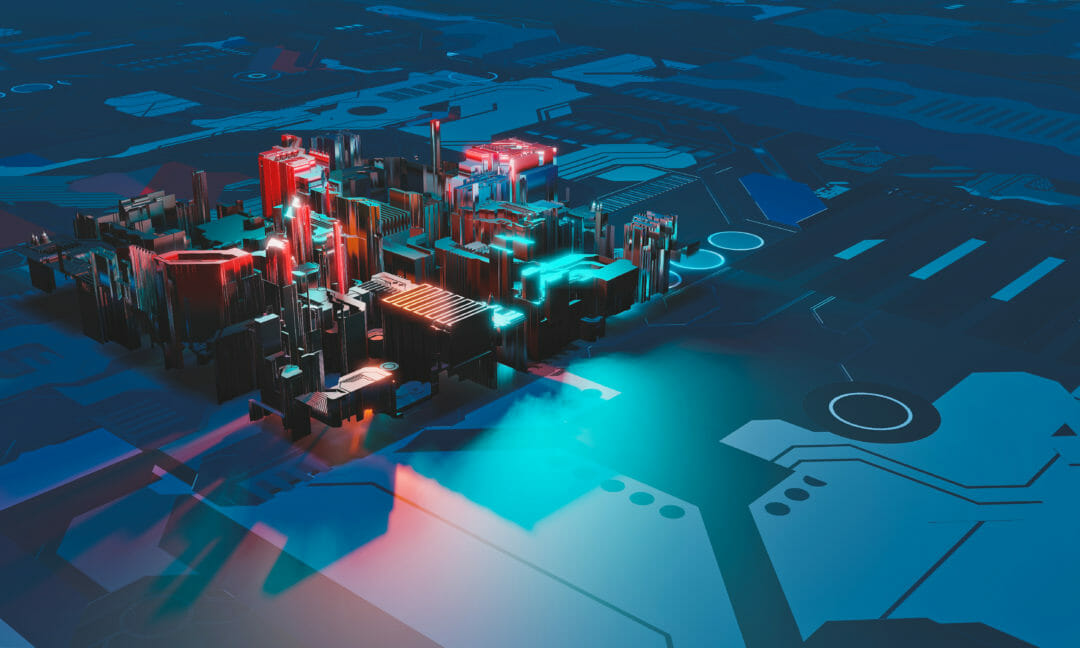A blockchain voting system recently trialed in West Virginia during the 2018 midterms, allowed the electorate to vote from anywhere with absolute security. While it seems blockchain could usher in a new level of transparency in politics, it is important we don’t get carried away. Blockchain still has its limitations. Despite this, there are some interesting applications for blockchain in manufacturing.
At the peak of its hype cycle, it seemed that blockchain and distributed ledger technology (DLT), the system that makes up blockchain, could do anything. As time has passed, the waters have cooled, and most people realize that it will be many years before blockchain reaches technological maturity. In the meantime, it will continue to offer new ways of working in a variety of manufacturing applications.
First, let’s look at definitions. A distributed ledger is a shared, decentralised network used to record the transaction of data and assets, which is then replicated to participants in the network. The crucial difference between this and, say, a bank is that there is no central administrator or storage. Instead, each participant on the network replicates, verifies and saves an identical copy of the ledger by consensus.
The blockchain guide for CTOs and tech leaders: suitability, adoption, regulation, hype and future predictions
Building on this, blockchain is a cryptographically secure, immutable digital ledger that records transactions on a peer-to-peer network. It uses a sequential chain of blocks that contain timestamped data, hence the term ‘block chain’, to create a historical trail of the transaction. Because all nodes on the network agree on this chain of events, it makes it next to impossible to alter the record without the agreement of the other nodes, allowing a universal truth to be maintained.
Internet of things (IoT)
While blockchain has gained popularity for use in cryptocurrencies, the robust nature of the underlying technology makes it ideal for other networks that share data, such as the Internet of Things. In the past, IoT networks have been susceptible to attack from botnets, compromising the security of the plant. However, blockchain offers a way of adding security to IoT applications.
Where IoT devices have traditionally relied on centralised servers to share and process information, blockchain decentralises this approach and allows individual nodes to create secure smart contracts with other nodes on the network, thus alleviating the need for human beings or centralised servers to slow down communication.
IoT has allowed manufacturers to get more years out of their machinery; this has meant that some pieces in use today are legacy machines. In the case that your legacy machine breaks down, this can be replaced.
3D printing
3D printing technology and additive manufacturing have the potential to allow small and large companies to access databases of complex parts for them to use in their designs. These parts could be created by anyone and could be used for a fee. However, this does raise the question about intellectual property. After all, what is to stop users from copying part-information without paying the original creator?
This digital supply chain of parts could be backed by blockchain certification. These certificates would clearly state the owner of the IP, allowing all parties see what it was used in and how much is due. This would streamline group design projects between companies as it would allow them to easily understand who had devised what part and allow for a transparent and fair traceability of IP.
Infringing intellectual property — an issue for brand safety and security
This could be taken further by registering products or parts for patents and backing them up in blockchain. Not only would this speed up the patent creating process, it could improve the speed at which violations could be found because a digital master template would be available to easily compare parts.
Supply chain
Supply chain traceability is the most talked about use for blockchain within manufacturing. As the general public becomes more interested in understanding exactly where their products come from, developing adequate technology to allow this is key. Being able to produce this information will allow for stronger trust to be forged between producers and consumers.
The technology also has key environmental impacts as it will create a paperless secure method of traceability with the large number of products transported all over the world. It will also streamline the amount of time taken to fill out transport forms thus reducing the amount of red tape and expediting the transportation of goods.
The only issue with the technology is how to ensure the primary information put into the blockchain is trustworthy. In situations where the manufacturing market is highly controlled, this will not be a problem, but it is the crux on which blockchain will either thrive or die.
Blockchain is a powerful technology. By creating truly secure distributed digital ledgers, many issues that have stopped progress will no longer exist. However, caution and understanding are necessary. The technology has come a long way, and it is now time to smooth out the bumps and get blockchain ready for the manufacturing sector.








